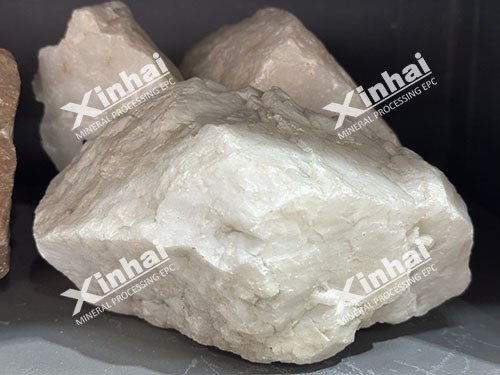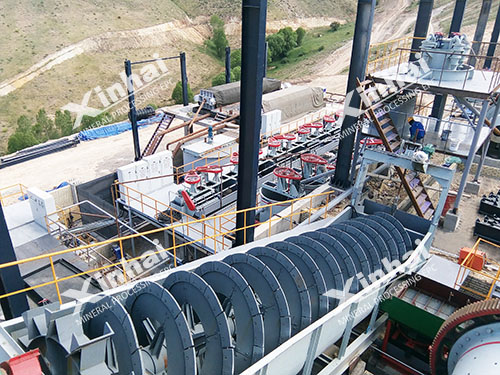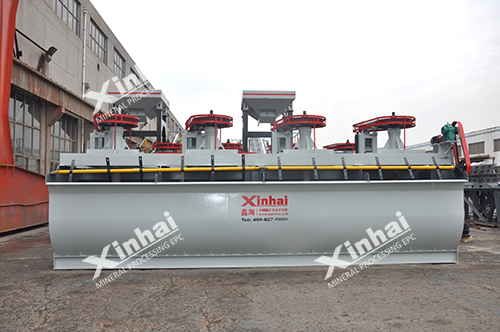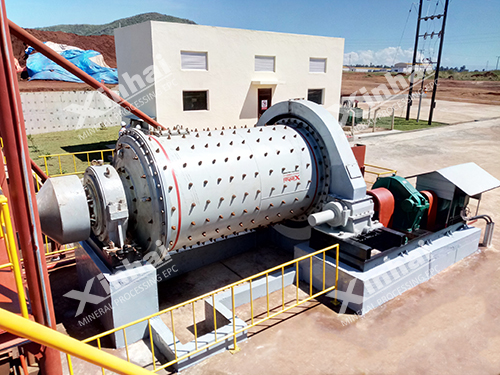
Silica sand is an essential raw material for various industries, including glass production, foundries, construction, and water filtration. However, raw silica sand typically contains impurities like clay, dust, iron oxides, and oversized particles that must be eliminated to comply with industrial standards. Choosing the appropriate silica sand washing plant is crucial for efficient processing, cost-effectiveness, and high-quality results. This article will outline the important factors to consider when selecting a silica sand-washing plant.

Each silica sand deposit is distinct, and the first step in selecting a washing plant is to comprehend the specific traits of your raw material. A generic approach is seldom effective, as the types and amounts of impurities, particle sizes, and moisture levels can vary greatly among deposits.
Begin with a thorough material analysis in partnership with a mineral testing lab. Important parameters to assess include:
Impurity composition: Common impurities include clay, silt, organic matter, and iron oxides. For instance, clay coatings on sand grains may require intensive scrubbing, while iron impurities might necessitate magnetic separation.
Particle size distribution: Silica sand for glass manufacturing usually needs grains sized between 0.1 mm and 0.5 mm. If your deposit has a significant amount of ultrafine particles (<0.075 mm), advanced classification systems will be necessary to prevent product losses.
Moisture content: Excess moisture can obstruct equipment and raise drying expenses. If your sand has high natural moisture, prioritize dewatering systems like centrifuges or filter presses.
This analysis is crucial as it influences equipment selection. For example, a deposit with significant clay contamination may need an attrition scrubber with a longer retention time, while sand rich in fine particles could benefit from a combination of hydraulic classifiers and cyclones to maximize yield.

A silica sand washing plant is not merely a collection of machines; it is a meticulously organized process. Let’s examine each stage in detail and how to customize it to your requirements.
Before washing, raw silica sand typically undergoes pre-treatment to eliminate large debris and break up clumps. Vibrating grizzly screens or trommel screens are commonly employed for this purpose. These machines filter out oversized rocks, twigs, and other contaminants that could harm downstream equipment. For deposits with high clay content, a log washer may be included to pre-slurry the material, enhancing the efficiency of the scrubbing process.
The scrubbing stage is where the real work occurs. This is when clay coatings, organic matter, and surface contaminants are removed from the sand grains. The industry primarily relies on two types of scrubbers:
Attrition scrubbers: These powerful machines utilize rotating paddles to generate friction between particles, making them effective for removing stubborn clay or iron oxide coatings. For instance, an Australian glass sand producer experienced a 30% increase in purity after adopting an attrition scrubber with adjustable rotor speed.
Drum scrubbers: These gentler, rotating drums clean softer materials through tumbling action. While they are energy-efficient, they may not perform well with heavily contaminated sand.
Pro Tip: Opt for scrubbers equipped with variable speed drives and adjustable retention times to customize the process according to real-time feed conditions.
Following scrubbing, the sand-water slurry undergoes classification to ensure the final product adheres to specific size requirements.
Hydraulic classifiers utilize upward water flow to separate particles based on settling velocity, effectively removing silt and ultrafine.
Spiral classifiers offer both classification and preliminary dewatering, making them a cost-effective option for medium-sized operations.
High-frequency vibrating screens deliver precise size separations, particularly for coarse sand.
For operations aiming for multiple product grades (such as glass sand, foundry sand, and filtration sand), a multi-stage classification system with hydrocyclones can enhance profitability.
Dewatering is crucial for lowering drying expenses, yet it is often neglected. Modern facilities typically employ a combination of:
High-frequency dewatering screens: These effectively remove surface moisture, achieving moisture content levels of 8–12%.
Filter presses: Suitable for premium-grade sand, they can reduce moisture to below 10%. A sand producer in the U.S. reduced drying energy costs by 40% after implementing a filter press.
Thickeners and settling ponds: These systems reclaim process water, decreasing freshwater usage by up to 90%.

Even after scrubbing, silica sand may still contain trace impurities that can impact its marketability. Here’s how to address them:
Magnetic separators: High-intensity rare-earth magnets can eliminate up to 98% of iron oxides. For example, a facility in India increased its SiO2 content from 97% to 99.5% by incorporating a two-stage magnetic separation system.
Spiral concentrators: These gravity-driven devices separate heavy minerals like zircon or garnet.
Froth flotation: Although less common in silica sand processing, flotation cells can remove lightweight organic particles using chemical agents.
Water and energy usage are significant issues. Leading facilities are now implementing closed-loop systems:
Water recycling: Thickeners and filter presses can recover up to 95% of process water. In Jordan, a zero-discharge plant utilizes treated wastewater, significantly reducing freshwater costs.
Solar drying: Some producers in dry regions are using solar dryers to lessen dependence on fossil fuels.
Dust control: Enclosed conveyors and misting systems safeguard both workers and the environment.

The choice of equipment supplier can significantly impact your project. Focus on companies that:
Conduct on-site testing with your actual sand samples.
Provide turnkey solutions, including installation and operator training.
Demonstrate a successful history in your desired industry (such as glass or foundry).

Choosing a silica sand-washing plant is a challenging yet beneficial process. By carefully evaluating your materials, investing in versatile machinery, and focusing on sustainability, you can achieve greater purity, reduced expenses, and entry into high-end markets.
At Xinhai, we leverage years of experience in mineral processing along with advanced technology to provide washing plants that surpass industry benchmarks. Reach out to us today to arrange a complimentary feasibility study and begin enhancing your silica sand operations!
Gold mining ain't just for the big players anymore. Small and medium-sized enterprises (SMEs) are diving into the game, chasing cost-effective ways to turn ore into profit.
President Trump’s "Rare Earth for Aid" proposal has stirred up quite a buzz lately. The idea is straightforward: Ukraine trades its rare earth minerals and other resources for U.S. security promises and cash.
